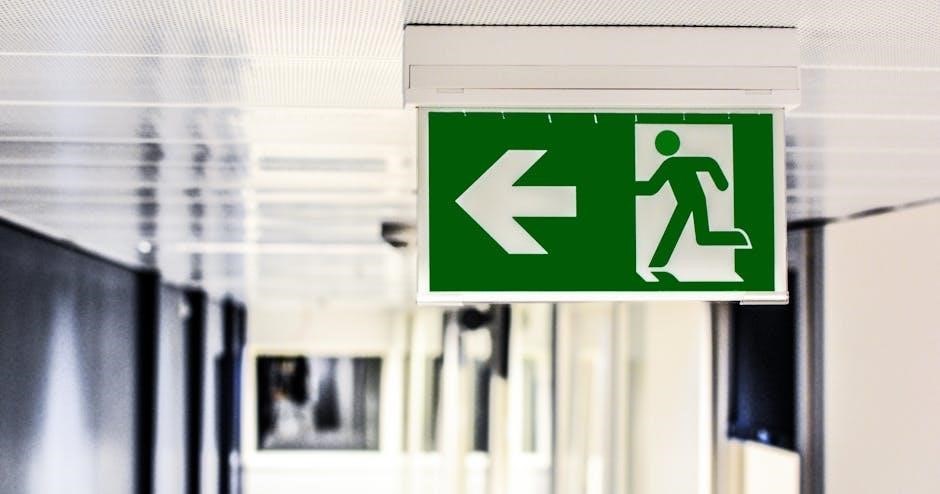
guide d’apprentissage 4 lettres
Welcome to this comprehensive guide designed to help learners master the recognition and writing of 4 essential letters. Structured with clear activities and interactive exercises, this guide simplifies letter learning through tracing, sound connection, and practical repetition, ensuring a solid foundation for early literacy skills.
Overview of the Guide
This guide is specifically designed to assist learners in mastering the recognition and writing of four essential letters. It incorporates a variety of methods, including tracing exercises, sound-letter associations, and interactive activities. The guide is structured to progress from basic letter formation to advanced techniques, ensuring a comprehensive understanding. With a focus on practical application, it offers activity sheets, video tutorials, and repetition-based exercises to reinforce learning. Tailored for both young students and self-directed learners, this resource provides a clear pathway to letter mastery through engaging and effective strategies.
Importance of Letter Recognition
Mastering letter recognition is a cornerstone of early literacy, laying the foundation for reading and writing skills. It enables learners to identify and recall letters, crucial for spelling and word recognition. By connecting letters to sounds, learners develop phonological awareness, enhancing their ability to decode words. Early recognition builds confidence and a strong academic foundation. It also fosters cognitive development, improving memory and language skills. This fundamental step prepares learners for more complex literacy tasks, making it an essential focus in any learning journey. Effective letter recognition is key to unlocking future academic success and lifelong learning opportunities.
Structure of the Guide
This guide is divided into clear sections, each focusing on specific aspects of letter learning. It begins with an introduction to letter recognition, followed by foundational tracing exercises. Subsequent sections explore methods like video tutorials and interactive activities, while advanced techniques incorporate multisensory approaches and technology. Evaluation strategies and additional resources are also included to support progress tracking. The guide is designed to progress logically, from basic skills to mastery, ensuring learners build confidence and fluency. Each section is complemented by practical tools, making it a comprehensive resource for effective letter learning tailored to diverse learning styles and needs.

Understanding the Basics of Letter Learning
Mastering letter basics involves tracing, connecting letters to sounds, and practicing regularly. Tracing enhances motor skills and memory, while sound association builds phonetic awareness, laying a strong literacy foundation.
The Role of Tracing Letters
Tracing letters is a fundamental step in letter learning, enhancing motor skills and memory. By repetitively tracing, learners develop muscle memory, improving handwriting accuracy. This method also strengthens letter recognition, as it engages visual and tactile senses, creating a multisensory learning experience. Tracing helps children understand letter formation, from starting points to directional strokes, reducing errors. Regular tracing practice builds confidence and familiarity, making it easier to connect letters to sounds and form words. It is a cornerstone activity in early literacy, laying a solid foundation for reading and writing proficiency.
Benefits of Manual Tracing
Manual tracing offers numerous benefits for young learners, enhancing fine motor skills and hand-eye coordination. It reinforces letter recognition by linking physical movement to visual memory, making learning more engaging. Tracing also improves letter formation accuracy and consistency, essential for legible handwriting. This tactile approach helps children remember shapes and sequences, reducing letter confusion. Regular tracing practice builds muscle memory, accelerating the learning process. It provides immediate feedback, allowing learners to correct mistakes and gain confidence. Overall, manual tracing is a powerful tool that supports both motor development and academic readiness in early literacy education.
Connecting Letters to Sounds
Connecting letters to sounds is a critical step in early literacy, enabling learners to decode words effectively. By associating each letter with its corresponding sound, learners build phonological awareness, a foundational skill for reading. This connection helps in recognizing patterns and blending sounds to form words. Interactive activities, such as sound mapping and word building, reinforce this relationship. Consistent practice ensures that learners can apply this knowledge fluently, making reading and writing more accessible. This skill is vital for progressing from letter recognition to reading simple words, fostering confidence and independence in young learners.

Methods for Effective Letter Learning
Effective letter learning involves video tutorials, interactive exercises, and activity sheets. Multisensory approaches combine visual, auditory, and tactile methods, enhancing retention and engagement for young learners.
Video Tutorials and Demonstrations
Video tutorials provide clear, step-by-step demonstrations for learning letters. They show how to form letters, trace shapes, and connect sounds to symbols. Visual examples help learners understand proper letter formation and pronunciation. Demonstrations often include tracing exercises, allowing learners to practice alongside the video. This method enhances engagement and retention, making complex skills easier to grasp. Videos also offer repetition, enabling learners to review and master letter recognition at their own pace. Interactive elements, such as pausing or rewinding, cater to individual learning styles, ensuring a comprehensive understanding of each letter’s structure and sound connection.
Interactive Exercises and Activities
Interactive exercises and activities are essential for engaging learners and reinforcing letter recognition. These include matching games, tracing exercises, and letter ordering tasks. Hands-on activities, such as forming letters with sand or whiteboards, enhance tactile learning. Digital tools like educational apps provide dynamic, self-paced practice. Multisensory approaches, such as linking letters to sounds or objects, deepen understanding. Group activities encourage collaboration and fun, while individual exercises allow for personalized progress. Regular repetition and varied methods ensure comprehensive mastery of the 4 letters, making learning enjoyable and effective for all learners, regardless of their learning style or pace.
Using Activity Sheets for Practice
Activity sheets are a core component of effective letter learning, offering structured and engaging exercises. They often include tracing templates, letter matching games, and coloring activities to reinforce recognition. Learners can practice writing letters independently, improving fine motor skills and hand-eye coordination. Many sheets feature simple words or phrases, helping to connect letters to their sounds. Interactive elements like mazes or puzzles add fun, keeping learners motivated. Regular use of activity sheets builds confidence and familiarity with the letters, making them a valuable tool for consistent and enjoyable practice in the learning journey.

Advanced Techniques for Mastery
Explore multisensory approaches, integrating technology, and repetition to enhance letter mastery. These methods ensure deeper understanding and long-term retention of letter recognition and writing skills effectively.
Multisensory Approaches to Learning
Multisensory approaches engage sight, sound, and touch to enhance letter learning. Tracing letters with fingers or tools combines tactile and visual feedback, aiding memory retention. Auditory cues, like sounding out letters, reinforce phonemic awareness. Kinesthetic activities, such as writing in sand or air, make learning interactive and memorable. These methods cater to diverse learning styles, ensuring comprehensive understanding and mastery of letter shapes and sounds. By integrating multiple senses, learners build stronger connections between letters and their meanings, making the learning process enjoyable and effective for all ages and skill levels.
Incorporating Technology in Learning
Technology enhances letter learning through interactive tools and resources. Educational apps and websites offer engaging exercises, such as tracing games and letter recognition quizzes. Touchscreen devices allow learners to practice writing letters with instant feedback. Video tutorials and animated demonstrations provide visual and auditory cues, aiding retention. Additionally, interactive platforms track progress, offering personalized learning paths. Incorporating technology makes learning dynamic and accessible, catering to diverse learning styles and preferences. These tools not only simplify letter mastery but also make the process enjoyable and effective for learners of all ages.
Reinforcement Through Repetition
Repetition is a cornerstone of effective letter learning, helping to solidify recognition and writing skills. Regular practice through tracing exercises, writing drills, and interactive activities ensures letters are committed to long-term memory. Consistent repetition builds muscle memory, improving handwriting accuracy and speed. It also reinforces the connection between letters and their sounds, making reading and writing more intuitive. By incorporating repetition into daily practice, learners develop confidence and fluency, laying a strong foundation for advanced literacy skills. This method is particularly effective when paired with engaging tools and resources that make practice enjoyable and rewarding.

Evaluation and Progress Tracking
Evaluation is crucial for monitoring progress in letter recognition and writing skills. Regular assessments using activity sheets and exercises help identify areas needing improvement, ensuring steady growth.

Assessing Letter Recognition Skills
Assessing letter recognition skills involves evaluating a learner’s ability to identify and name letters accurately. This can be done through activity sheets, tracing exercises, and interactive quizzes. Regular checks help track progress, ensuring letters are recognized quickly and correctly. Feedback from these assessments guides targeted practice, reinforcing weak areas and building confidence. Using diverse methods, such as matching games or writing tasks, provides a comprehensive understanding of skill mastery. Consistent evaluation ensures learners stay on track, progressing smoothly toward fluent letter recognition and forming a strong foundation for literacy.
Using Feedback for Improvement
Feedback is crucial for refining letter recognition and writing skills. After assessments, learners receive specific insights into their progress, highlighting areas needing attention. This feedback loop helps adjust learning strategies, ensuring correction of common mistakes and reinforcement of proper techniques. By addressing errors promptly, learners build confidence and accuracy. Regular feedback sessions also motivate learners to engage more actively with practice materials, fostering a cycle of continuous improvement and mastery of the 4 essential letters.

Additional Resources for Learners
Recommended educational videos, interactive activity sheets, and supplementary learning materials provide additional support for mastering letter recognition and writing skills effectively.
Recommended Educational Videos
Engaging educational videos are essential for visual learners, offering step-by-step demonstrations of letter tracing and pronunciation. These videos provide interactive lessons, making letter recognition fun and accessible. Many include animations and real-life examples to reinforce learning. For instance, tutorials like “DEMO(4)” and “TUTO” guide learners through tracing letters and connecting them to sounds. These resources are particularly helpful for young children or those needing additional support. By combining visual, auditory, and practical elements, educational videos enhance retention and make the learning process enjoyable and effective for mastering the 4 key letters.
Supplementary Learning Materials
Supplementary learning materials, such as workbooks, flashcards, and tracing sheets, complement the guide by providing hands-on practice. These resources are designed to reinforce letter recognition and writing skills through repetition and playful activities. Interactive manuals, like “manuel dauto-apprentissage,” offer structured lessons for self-paced learning. Additionally, activity books with letter-based puzzles and quizzes challenge learners to apply their knowledge creatively. These materials cater to diverse learning styles, ensuring that every learner can engage with the content in a way that suits them best. They are invaluable for reinforcing lessons and encouraging consistent practice outside of structured learning sessions.
Mastering 4 essential letters is a foundational step in literacy. This guide provides structured lessons, tracing exercises, and interactive activities to ensure confident letter recognition and writing skills.
Final Tips for Successful Learning
To ensure mastery of the 4 letters, prioritize consistent practice and use multisensory approaches. Trace letters by hand to strengthen muscle memory and connect each letter to its sound for better retention. Incorporate interactive activities and technology, like educational videos, to engage learners. Regularly review and repeat exercises to reinforce learning. Provide positive feedback and celebrate progress to maintain motivation. Track improvements through activity sheets and assessments. Stay patient and encourage learners to explore creative ways to practice, such as forming letters with everyday objects. By staying consistent and engaged, learners will confidently master these essential letters.